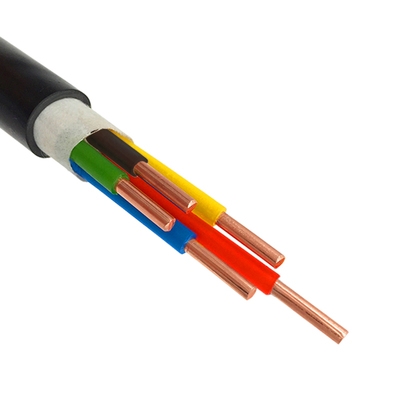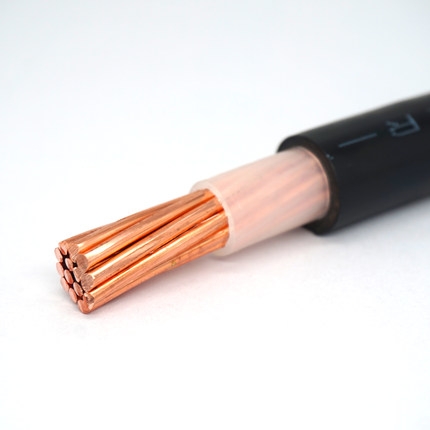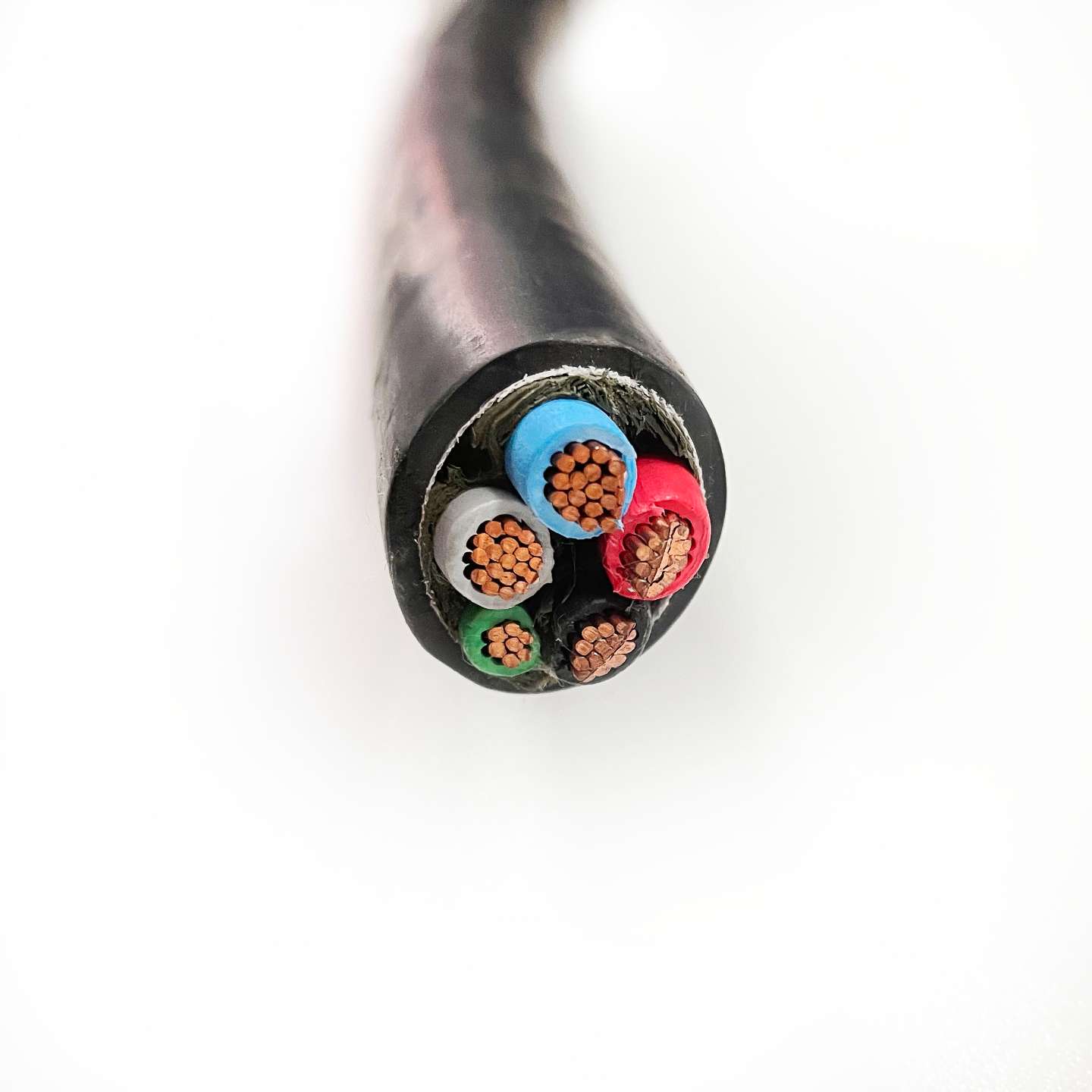Die Auswahl der geeigneten Stromkabel ist entscheidend für die Sicherheit, Effizienz und Leistung elektrischer Systeme. Egal, ob Sie ein Haus, eine Industrieanlage oder eine andere Umgebung ausstatten, die Wahl des richtigen Kabels kann elektrische Gefahren verhindern und eine zuverlässige Stromversorgung gewährleisten. Dieser Artikel bietet einen umfassenden Leitfaden für die Auswahl des richtigen Stromkabels für Ihre Bedürfnisse, in dem die verschiedenen Arten von Kabeln, ihre Anwendungen und die wichtigsten Faktoren, die bei der Auswahl zu berücksichtigen sind, erörtert werden.

Verständnis von Stromkabeln
Stromkabel werden verwendet, um elektrische Energie von einem Punkt zu einem anderen zu übertragen. Sie bestehen aus einem oder mehreren elektrischen Leitern, in der Regel aus Kupfer oder Aluminium, und sind mit einem Material isoliert, das dem Stromfluss widersteht, um Kurzschlüsse und elektrische Schläge zu vermeiden. Sie sind in einer Vielzahl von Umgebungen zu finden, z. B. in Wohn-, Geschäfts- und Industriegebäuden.
Arten von Stromkabeln
- Flexible Kabel: Diese Kabel sind für Anwendungen gedacht, bei denen Flexibilität erforderlich ist, wie z. B. bei tragbaren Geräten, Apparaten und Werkzeugen. Sie werden in der Regel mit verseilten Leitern hergestellt, um die Flexibilität zu erhöhen.
- Gepanzerte Kabel: Panzerkabel werden in Umgebungen eingesetzt, in denen ein mechanischer Schutz erforderlich ist. Sie verfügen über einen schützenden Metallmantel, der vor physischen Schäden schützt und für unterirdische Installationen oder raue Industrieumgebungen geeignet ist.
- Nicht-metallische Mantelleitungen: Diese auch als Romex bezeichneten Kabel werden häufig für die Verkabelung in Wohngebäuden verwendet. Sie bestehen aus isolierten Leitern, die von einem Kunststoffmantel umschlossen sind, und sind für den Innenbereich geeignet.
- Koaxialkabel: Koaxialkabel werden für die Übertragung von elektrischen Hochfrequenzsignalen verwendet. Sie bestehen aus einem zentralen Leiter, einer Isolierschicht, einer metallischen Abschirmung und einer äußeren Isolierschicht. Sie werden häufig für Kabelfernsehen und Internetverbindungen verwendet.
- Unterwasserkabel: Diese Kabel sind für den Einsatz in Unterwasseranwendungen, wie z. B. in Brunnen und Pumpen, konzipiert. Sie sind aus Materialien gefertigt, die das Eindringen von Wasser verhindern und korrosionsbeständig sind.
- Hochspannungskabel: Hochspannungskabel werden für die Übertragung von Strom mit hohen Spannungen verwendet, in der Regel über große Entfernungen. Sie verfügen über zusätzliche Isolierung und Schutzschichten, um die hohe elektrische Belastung zu bewältigen.
Zu berücksichtigende Schlüsselfaktoren
1. Nennspannung
Die Spannungsfestigkeit eines Stromkabels ist einer der wichtigsten Faktoren, die zu berücksichtigen sind. Das Kabel muss für die maximale Spannung des elektrischen Systems ausgelegt sein, um einen Ausfall der Isolierung und mögliche elektrische Brände zu verhindern. Vergewissern Sie sich, dass das von Ihnen gewählte Stromkabel die Spannungsanforderungen Ihrer Anwendung erfüllt oder übertrifft.
2. Aktuelle Tragfähigkeit
Die Strombelastbarkeit oder Amperezahl bezieht sich auf die maximale Strommenge, die ein Stromkabel sicher leiten kann, ohne zu überhitzen. Es ist wichtig, ein Kabel mit einer Strombelastbarkeit zu wählen, die den Stromanforderungen Ihres elektrischen Systems entspricht oder diese übertrifft. Zu den Faktoren, die die Strombelastbarkeit beeinflussen, gehören das Leitermaterial, die Art der Isolierung und die Installationsbedingungen.
3. Material des Leiters
Sie werden in der Regel aus Kupfer- oder Aluminiumleitern hergestellt. Kupfer ist ein besserer Stromleiter und bietet eine höhere Strombelastbarkeit, was es für die meisten Anwendungen ideal macht. Aluminium hingegen ist leichter und preiswerter, hat aber eine geringere Leitfähigkeit. Wählen Sie das Leitermaterial je nach Ihren spezifischen Anforderungen und Ihrem Budget.
4. Isolierung Typ
Die Art der Isolierung ist entscheidend für die Sicherheit und Langlebigkeit von Stromkabeln. Zu den gängigen Isoliermaterialien gehören PVC (Polyvinylchlorid), XLPE (vernetztes Polyethylen) und EPR (Ethylen-Propylen-Kautschuk). Jedes Material hat seine eigenen Eigenschaften und Anwendungen:
- PVC: Weit verbreitet, kostengünstig und für Innenanwendungen geeignet.
- XLPE: Bietet eine bessere Wärmebeständigkeit und mechanische Festigkeit und ist daher für höhere Spannungen und Außenanwendungen geeignet.
- EPR: Bekannt für seine Flexibilität und hervorragenden elektrischen Eigenschaften, geeignet für eine Vielzahl von Umgebungen.

5. Umweltbedingungen
Berücksichtigen Sie die Umgebung, in der das Stromkabel installiert werden soll. Faktoren wie Temperatur, Feuchtigkeit, chemische Belastung und physische Einwirkungen können die Leistung und Haltbarkeit des Kabels beeinträchtigen. Zum Beispiel:
- In Außenbereichen oder feuchten Umgebungen sollten Sie Kabel mit wasserdichter oder wetterfester Isolierung wählen.
- In industriellen Umgebungen, in denen Chemikalien oder Öle zum Einsatz kommen, sollten Sie Kabel mit einer geeigneten chemikalienbeständigen Isolierung wählen.
- Bei unterirdischen Installationen sollten Sie für zusätzlichen Schutz gepanzerte Kabel verwenden.
6. Regulatorische Standards
Vergewissern Sie sich, dass die von Ihnen gewählten Netzkabel den einschlägigen Industrienormen und -vorschriften entsprechen. Die Einhaltung von Normen wie UL (Underwriters Laboratories), IEC (International Electrotechnical Commission) und NEC (National Electrical Code) gewährleistet, dass die Kabel die Sicherheits- und Leistungsanforderungen erfüllen.
Anwendungen von Stromkabeln
- Verkabelung im Wohnbereich: Für die Verkabelung in Wohngebäuden werden in der Regel nicht-metallische Mantelkabel (Romex) verwendet. Sie sind für Inneninstallationen geeignet und versorgen Steckdosen, Beleuchtung und Geräte mit Strom.
- Kommerzielle Gebäude: Kommerzielle Gebäude, die höheren Belastungen ausgesetzt sind und zusätzlichen Schutz benötigen. Gepanzerte Kabel und flexible Kabel werden in diesen Umgebungen häufig verwendet.
- Industrielle Einrichtungen: Industrielle Anwendungen erfordern Stromkabel, die rauen Bedingungen und hohen elektrischen Belastungen standhalten können. Panzerkabel, Hochspannungskabel und Unterwasserkabel werden häufig in der Industrie eingesetzt.
- Unterirdische und submarine Anlagen: Für die unterirdische und unterseeische Stromübertragung sind Hochspannungskabel mit robusten Isolier- und Schutzschichten erforderlich, um hohen elektrischen Belastungen und Umweltbedingungen standzuhalten.
- Tragbare Geräte und Werkzeuge: Flexible Kabel sind ideal für tragbare Geräte und Werkzeuge und bieten die nötige Flexibilität und Haltbarkeit für häufige Bewegungen und Handhabung.
Schritte zur Auswahl des richtigen Stromkabels
1. Beurteilen Sie Ihren Bedarf an elektrischer Energie
Beginnen Sie mit der Bewertung der elektrischen Anforderungen Ihrer Anwendung. Bestimmen Sie den Bedarf an Spannung, Strom und Leistung, um sicherzustellen, dass das ausgewählte Gerät die Last bewältigen kann.
2. Berücksichtigen Sie die Installationsumgebung
Analysieren Sie die Installationsumgebung, um potenzielle Herausforderungen wie extreme Temperaturen, Feuchtigkeit, chemische Belastung und physische Einwirkungen zu erkennen. Wählen Sie ein Netzkabel mit Isolierung und Schutzfunktionen, die für diese Bedingungen geeignet sind.
3. Überprüfung der Einhaltung von Normen
Überprüfen Sie, ob das Netzkabel den einschlägigen Industrienormen und -vorschriften entspricht. Die Einhaltung der Normen gewährleistet, dass das Kabel die Sicherheits- und Leistungskriterien erfüllt und das Risiko elektrischer Gefahren verringert.
4. Berechnen Sie die korrekte Größe
Verwenden Sie Stromrechner oder lassen Sie sich von einem Fachmann beraten, um die richtige Kabelgröße auf der Grundlage der Strombelastbarkeit und des Spannungsabfalls zu ermitteln. Die richtige Dimensionierung ist entscheidend, um Überhitzung zu vermeiden und eine effiziente Stromübertragung zu gewährleisten.
5. Bewertung von Kosten und Verfügbarkeit
Die Kosten sind zwar ein wichtiger Faktor, sollten aber nicht zu Lasten von Sicherheit und Leistung gehen. Berücksichtigen Sie die langfristigen Vorteile und die Zuverlässigkeit des Stromkabels. Stellen Sie außerdem sicher, dass das gewählte Kabel von seriösen Anbietern erhältlich ist.
Tipps zu Wartung und Sicherheit
- Regelmäßige Inspektionen: Überprüfen Sie die Netzkabel regelmäßig auf Anzeichen von Verschleiß, Beschädigung oder Verschlechterung. Ersetzen Sie beschädigte Kabel sofort, um elektrische Gefahren zu vermeiden.
- Richtige Handhabung und Installation: Befolgen Sie die Richtlinien des Herstellers für die Handhabung und Installation von Stromkabeln. Vermeiden Sie es, Kabel übermäßig zu biegen oder zu verdrehen, und verwenden Sie geeignete Werkzeuge und Zubehörteile, um sie zu sichern.
- Kennzeichnung und Dokumentation: Beschriften Sie die Netzkabel deutlich und dokumentieren Sie deren Spezifikationen und Installationsdetails. Dies hilft bei der Fehlersuche und bei Wartungsarbeiten.
- Schulung und Sensibilisierung: Stellen Sie sicher, dass das Personal, das mit den Geräten umgeht und sie wartet, angemessen geschult ist und die Sicherheitsprotokolle kennt. Eine ordnungsgemäße Ausbildung verringert das Unfallrisiko und gewährleistet einen sicheren und effizienten Betrieb.
Abschluss
Die Wahl des richtigen Stromkabels ist entscheidend für die Sicherheit, Effizienz und Zuverlässigkeit elektrischer Systeme. Wenn Sie die verschiedenen Typen, ihre Anwendungen und die bei der Auswahl zu berücksichtigenden Schlüsselfaktoren kennen, können Sie fundierte Entscheidungen treffen, die Ihren spezifischen Anforderungen entsprechen. Regelmäßige Wartung und die Einhaltung von Sicherheitspraktiken gewährleisten darüber hinaus die Langlebigkeit und Leistungsfähigkeit von elektrischen Anlagen und schützen sowohl Menschen als auch Eigentum vor elektrischen Gefahren. Unabhängig davon, ob es sich um eine private, gewerbliche oder industrielle Nutzung handelt, ist die Auswahl des richtigen Stromkabels ein entscheidender Schritt, um eine sichere und effiziente elektrische Infrastruktur zu gewährleisten.




